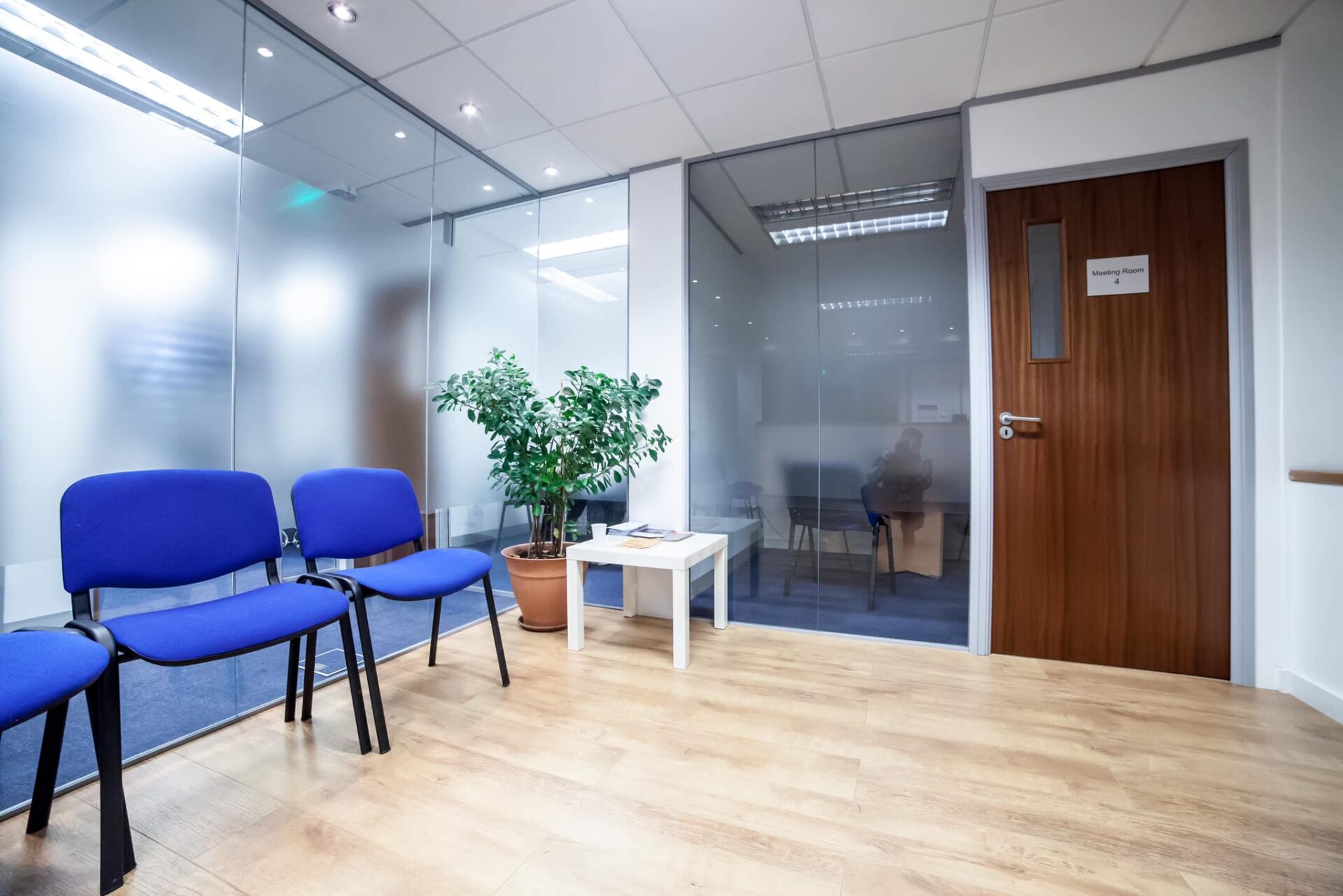
When it comes to designing efficient, comfortable, and secure spaces, choosing the right type of glass is more than an aesthetic decision; it’s a long-term investment. The difference between insulated glass and laminated glass goes beyond appearance; it influences how well a building retains heat, reduces noise, and ensures safety. For property owners, builders, architects, and construction managers, understanding these distinctions is key to choosing materials that truly enhance performance, comfort, and longevity.
This guide explains what sets insulated and laminated glass apart, where each performs best, and how to make the right decision for your next project.
What is insulated glass?
Insulated glass, often referred to as double glazing or insulating glass units (IGUs), is designed to improve a building’s thermal and acoustic performance. It consists of two or more glass panes separated by sealed air or gas-filled space, typically argon or krypton that acts as an insulating barrier.
This structure reduces the transfer of heat and sound, keeping interiors warmer in winter, cooler in summer, and quieter all year round. The edges of the panes are sealed with a spacer and moisture-resistant sealant to prevent condensation and maintain energy efficiency over time.
What is laminated glass?
Laminated glass is formed by bonding two or more layers of glass with an interlayer, typically made of polyvinyl butyral (PVB) or ethylene-vinyl acetate (EVA). This interlayer holds the glass firmly in place if it breaks, preventing sharp shards from scattering and reducing the risk of injury or damage. Beyond safety, the interlayer also enhances sound insulation and UV protection.
Key Differences Between Insulated and Laminated Glass
| Feature | Insulated Glass | Laminated Glass |
| Purpose | Designed for thermal insulation and energy efficiency. | Focused on safety, security, and sound reduction. |
| Structure | Two or more panes separated by air or gas. | Two or more panes bonded with a plastic interlayer. |
| Soundproofing | Reduces noise moderately. | Excellent for acoustic control in offices and busy areas. |
| Safety | May shatter into large pieces if broken. | Holds together when cracked, reducing risk of injury. |
| Best For | External windows and façades where energy efficiency matters. | Glass partitions, doors, and balustrades where safety and privacy are key. |
Performance Breakdown by Category
Soundproofing Capabilities
Laminated glass provides superior acoustic performance thanks to its interlayer, which absorbs sound vibrations and reduces noise transfer; ideal for meeting rooms, offices, and hospitality spaces. Insulated glass, while designed primarily for temperature control, still offers moderate sound reduction through its multi-pane structure, making it suitable for exterior glazing where both thermal and acoustic balance are needed.
Safety and Security
As a safety glass, laminated glass holds together when shattered, preventing injury and deterring break-ins; perfect for high-traffic areas, shopfronts, and public spaces. Insulated glass offers strength and security through its double-pane build but lacks the shatter-resistant qualities of laminated glass, making it more appropriate for façades and large window systems.
Energy Efficiency & Insulation
Insulated glass delivers exceptional energy efficiency by trapping air or inert gas between panes, maintaining indoor temperatures, and cutting heating or cooling costs in large commercial areas. Laminated glass, especially with solar or low-E coatings, also supports energy savings but focuses more on UV protection and comfort than thermal insulation.
Durability and Maintenance
Both options are durable, but laminated glass typically requires less maintenance and resists delamination over time. Insulated glass, though long-lasting, can face issues like moisture build-up or seal failure, making regular inspection important for sustained performance.
Cost and Value for Money
Insulated glass usually has a higher upfront cost but provides long-term value through energy efficiency and reduced utility bills. Laminated glass offers strong value for its durability, safety, and acoustic benefits, making it a practical, low-maintenance option for offices, hotels, and retail spaces.
Best Applications for Insulated Glass
1. Office buildings requiring thermal insulation:
Insulated glass is ideal for modern office buildings where maintaining a comfortable indoor climate is essential. Its dual-pane design helps stabilise internal temperatures, reducing reliance on heating and cooling systems. This not only improves employee comfort but also supports energy efficiency and sustainability goals.
2. Large commercial façades and windows:
For expansive glass façades or curtain walls, insulated glass offers excellent thermal control without sacrificing natural light. It helps reduce heat gain in summer and heat loss in winter, ensuring energy performance across large surface areas while maintaining a sleek, contemporary appearance.
3. Retail and hospitality spaces:
In environments like restaurants, hotels, or showrooms, where guest comfort and visual appeal are key, insulated glass delivers the right balance of performance and design. It ensures consistent indoor temperatures despite external weather changes, creating a pleasant atmosphere that enhances customer experience and reduces operational costs.
Best Applications for Laminated Glass
1. Glass partitions in offices and co-working spaces
Laminated glass is a top choice; it enhances focus in busy environments and contributes to a calm, professional atmosphere, perfect for co-working hubs or modern office layouts. It can be paired with frosted glass partitions to balance privacy and style.
2. Commercial spaces requiring safety and noise reduction
For retail stores, hospitality venues, and open-plan offices, laminated glass provides the right balance of protection and comfort. It built-in interlayer absorb impact and sound, making it safer than standard glass
3. Critical impact-resistant spaces
Laminated glass is specifically engineered for high-security and high-traffic areas like airports, banks, and hospitals. Its ability to hold together when shattered minimizes risks, making it essential in public or sensitive spaces.
How to Choose the Right Glass for Your Commercial Space
Factors to consider:
1. Budget
Insulated glass is generally more cost-effective for large façades and exterior glazing. Laminated glass, though more expensive, offers better long-term value in busy environments by combining safety, sound control, and durability, reducing maintenance over time.
2. Level of soundproofing required
For noise control, laminated glass provides superior acoustic performance thanks to its interlayer, which dampens vibrations and reduces sound transmission between spaces. Insulated glass helps reduce external noise, but it’s less effective for interior acoustic privacy.
3. Safety/security needs
Laminated glass is a safety glass that stays intact when shattered, making it ideal for public areas, offices, and high-security facilities. Insulated glass offers some added resistance due to its dual-pane design but isn’t shatter-resistant unless combined with laminated layers.
4. Energy efficiency goals
Insulated glass outperforms thermal insulation, keeping interiors comfortable while reducing heating and cooling costs. Laminated glass also supports efficiency by blocking UV rays and solar heat.
If privacy is a key concern, you might also want to explore obscure glass, which offers both discretion and design appeal for commercial interiors.
Final Thoughts
Both insulated and laminated glass serve vital but distinct purposes in commercial design. If your goal is to improve thermal performance and energy efficiency, insulated glass is the smarter choice. However, if safety, noise reduction, or acoustic comfort are higher priorities, laminated glass delivers stronger performance.
The best results often come from a balanced combination of both, using insulated glass for exteriors and laminated glass for interior partitions. Speaking with a commercial glass specialist ensures you choose the right specification for your building needs, budget, and long-term performance goals.
FAQs
Yes, laminated glass can offer some level of thermal insulation, but it’s not as effective as insulated glass, which is specifically designed for that purpose. Laminated glass focuses more on safety, sound reduction, and UV protection.
nsulated glass is typically used for exterior applications where temperature regulation is key. For interior partitions, laminated or acoustic glass is often preferred for better soundproofing and a sleeker aesthetic.
Both types are highly durable, but laminated glass generally has a longer lifespan since it doesn’t rely on sealed air gaps that can deteriorate over time, as insulated glass units (IGUs).
Yes. In many modern buildings, laminated glass is used as one or more panes within an insulated unit to provide both safety and superior energy performance.
Laminated glass is ideal for high-traffic spaces like banks, offices, and retail environments due to its impact on resistance and safety properties.
No, laminated glass can be cleaned just like standard glass using mild detergent and soft cloth. However, abrasive cleaners should be avoided to prevent scratching the surface.













